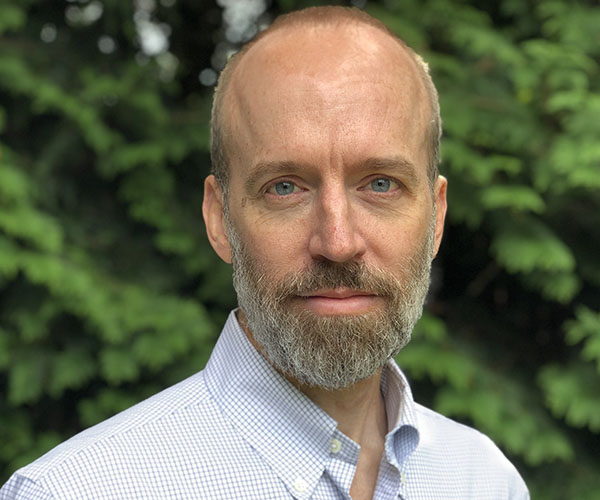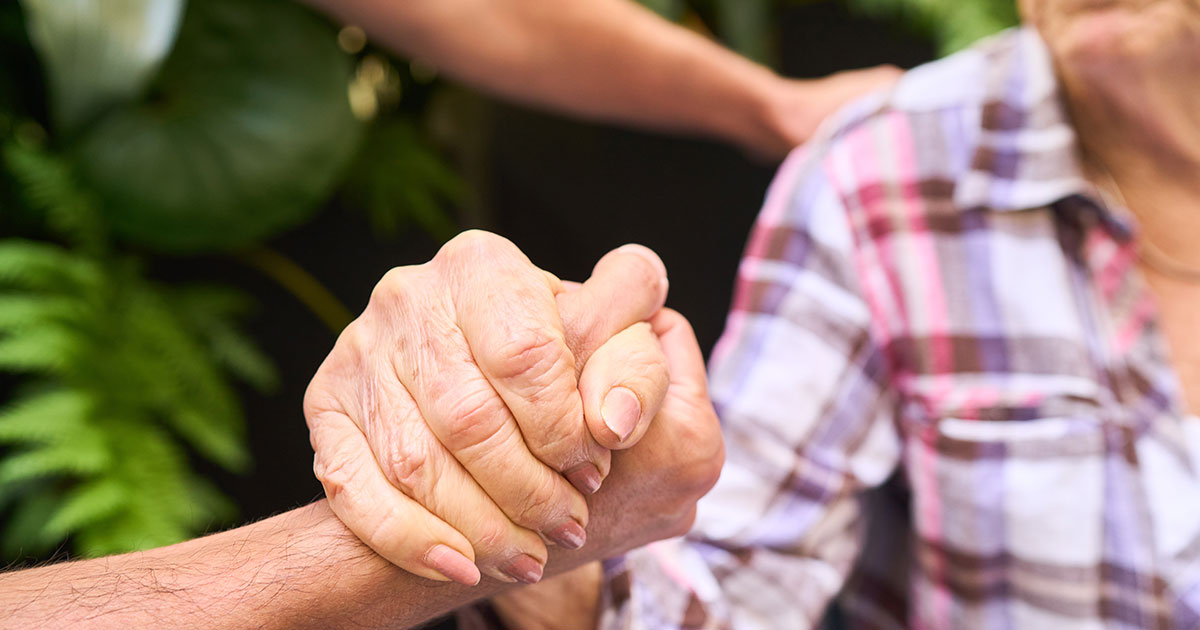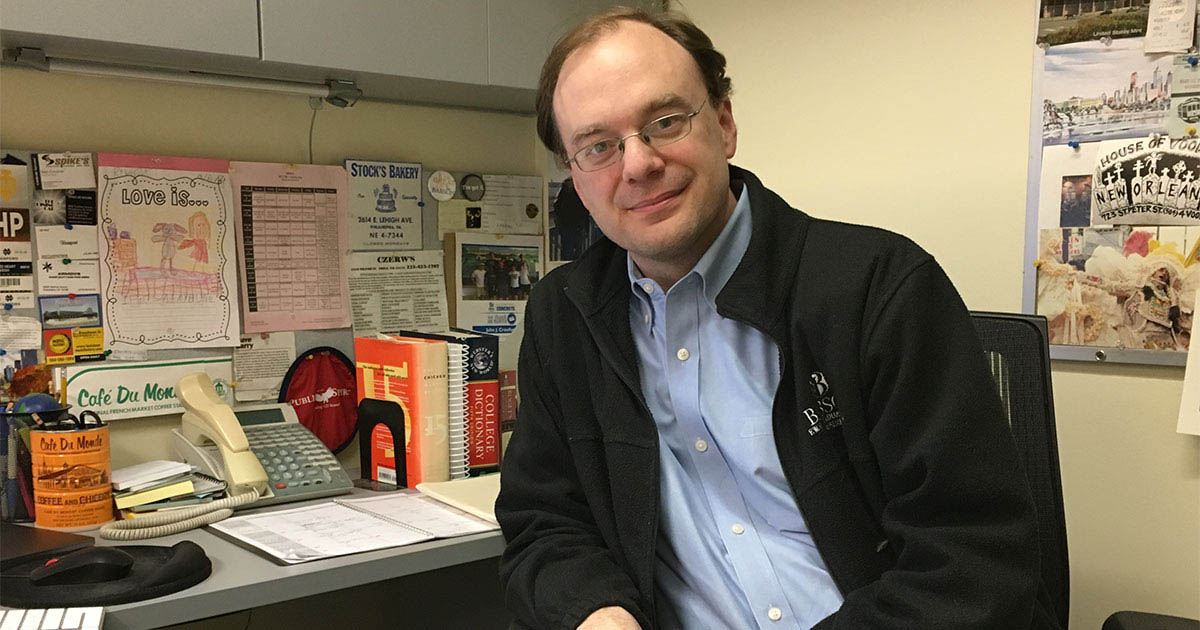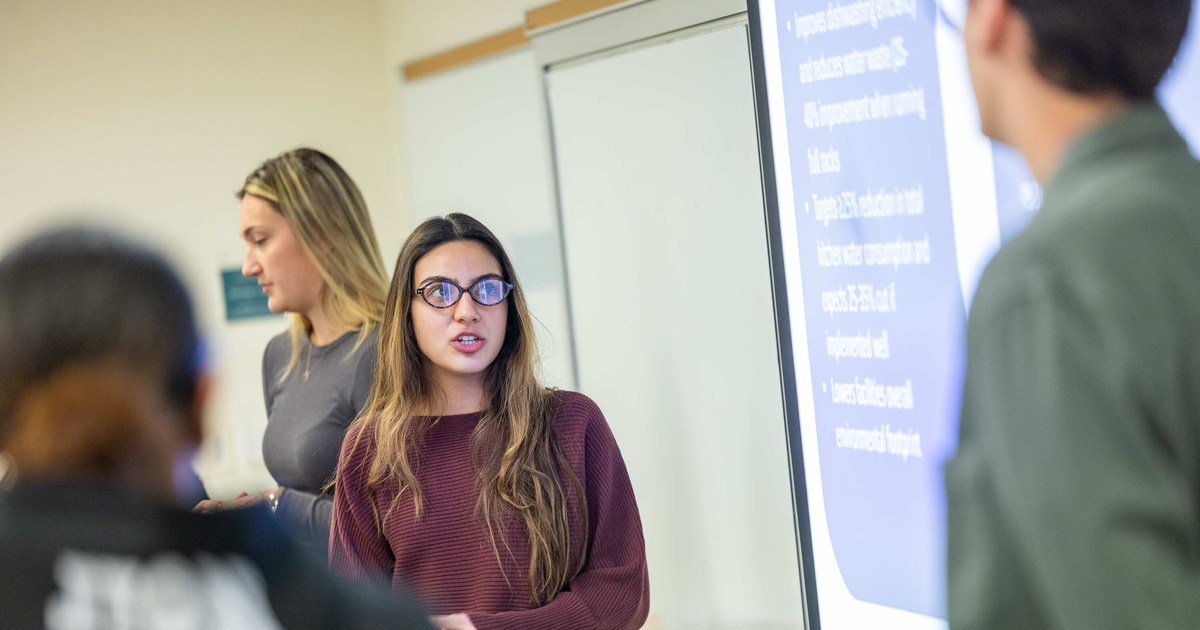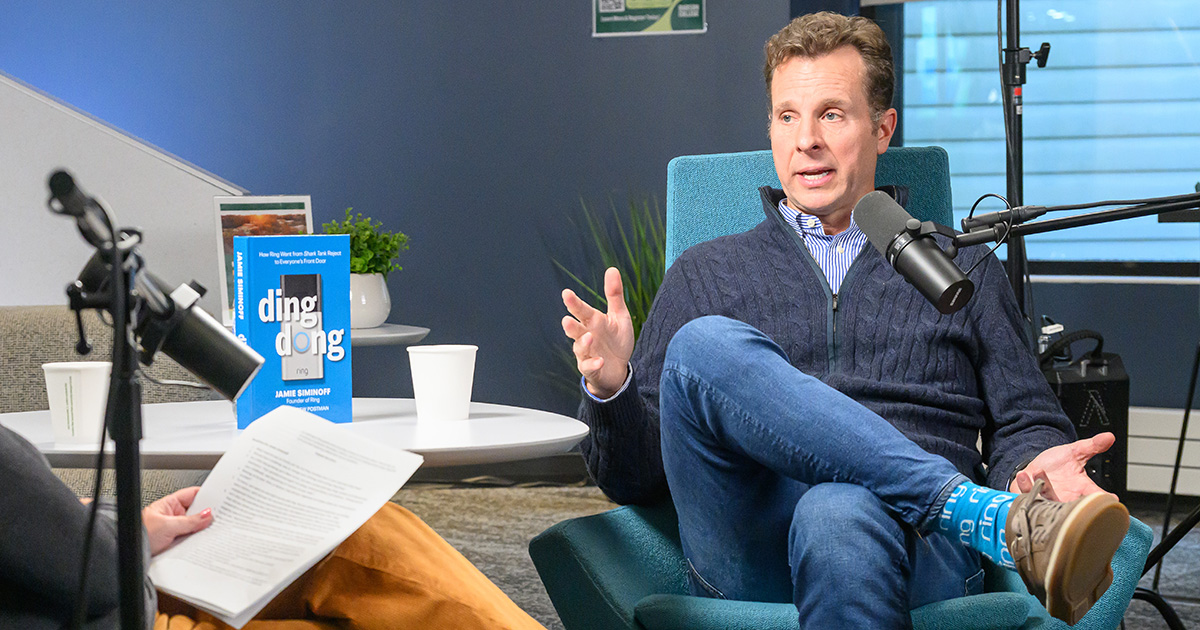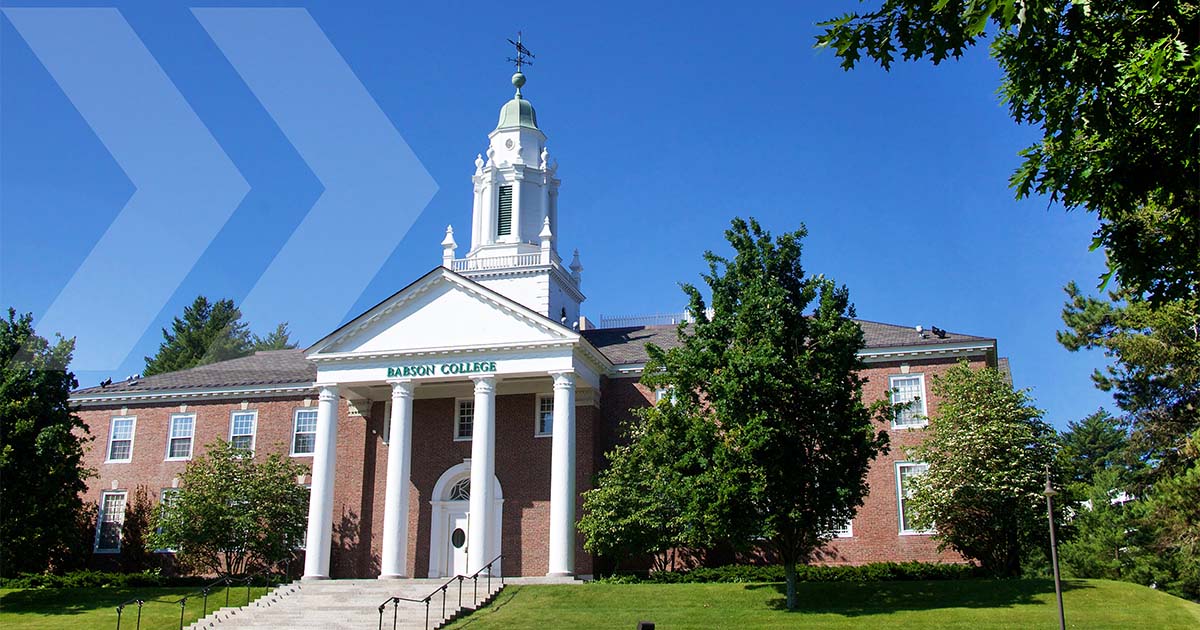Managing the Next Phase of Pandemic Response
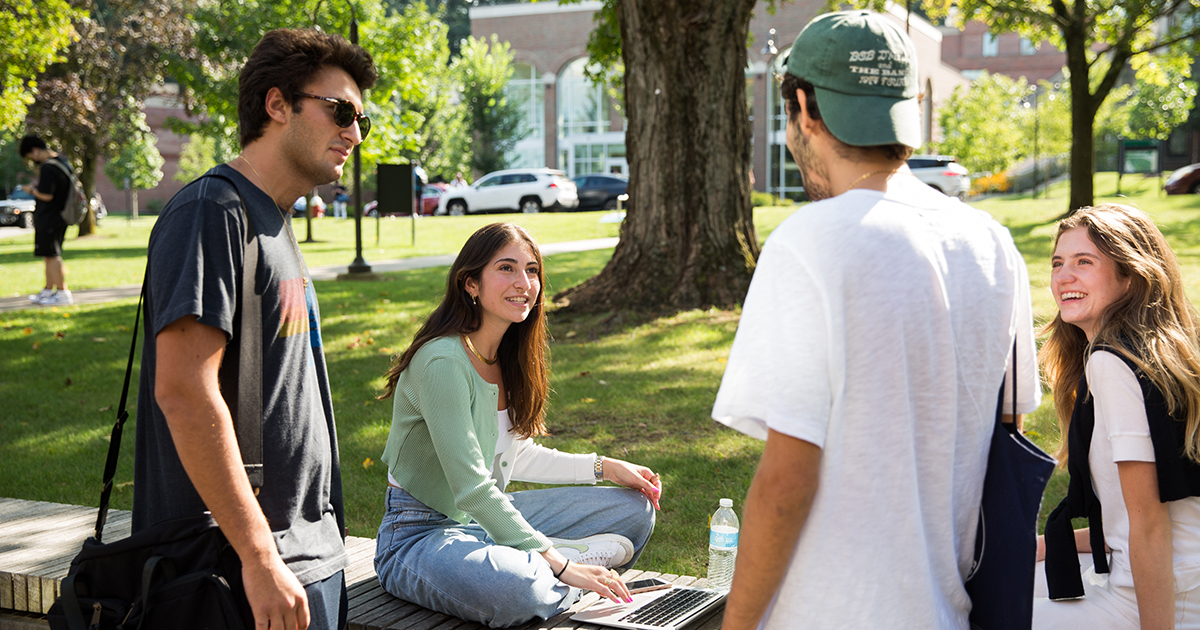
Since the start of the COVID-19 pandemic two years ago, Babson College has prioritized the health and safety of its community and the continuity of academic excellence of its students.
As it has navigated the challenges of the pandemic to meet those objectives, Babson has been supported by Environmental Health & Engineering Inc. (EH&E) since the summer of 2020. The expert consultants have advised on an integrated approach to emergency preparedness, with guidance that combines insight into building systems, public health, and safety protocols. EH&E has identified and supported Babson in tracking indicators that have helped guide the College’s COVID-19 response and communications.
As Babson and the world begin to move out of the emergency management phase of the COVID pandemic, we asked two EH&E experts about what may come next. Will Wade, CIH, is a certified industrial hygienist and principal consultant at EH&E, helping clients solve and respond to their most urgent and important environmental challenges. And, Kathleen Brown, ScD, is a doctor of science and a senior scientist at EH&E, whose public health experience spans roles as a scientist, consultant and policy analyst, city environmental planner, and member of the Board of Health for Needham, Massachusetts.
Since the start of the pandemic two years ago, Babson College has prioritized safeguarding the health and safety of the community and continuing academic excellence. How has the College performed in meeting those objectives?

Kathleen Brown, ScD, is a doctor of science and a senior scientist at EH&E.
Brown: “First and foremost, Babson was able to minimize and manage cases on its campus while providing in-person educational programming, athletics, and social activities for the campus community. Babson remained within the metrics of peer colleges, which consistently showed lower case rates than the surrounding communities. At the same time, Babson really maximized in-person learning, even when some of its peers were committed to full-remote learning. Babson also maintained a strong balance for providing mental health and social support for its students, while remaining cautious with regard to COVID. I think Babson was ahead of the curve on that, although other schools have started to think about this more in recent months.”
What are the biggest factors in keeping the community healthy?
Wade: “Using multiple strategies, often called layers of control, is the best way to control COVID-19 on a campus. This is what Babson did effectively. You have to understand the virus and how it spreads. You have to understand building systems and how they operate in order to implement effective ventilation controls. You also need to understand other controls, such as symptom monitoring, testing, and isolation/quarantine procedures, to effectively use layers of control.
Brown: “And, from the public health perspective, you need to understand disease patterns and case rates. This is where a fully integrated approach to creating a COVID response, with input from a variety of disciplines, has served Babson well.”
“Babson also maintained a strong balance for providing mental health and social support for its students, while remaining cautious with regard to COVID. I think Babson was ahead of the curve on that.”
Kathleen Brown, ScD, doctor of science and senior scientist at EH&E
What process and metrics does Babson College and EH&E use to make decisions and changes to campus protocols?
Wade: “Babson has been tracking a breadth of metrics. The College has public-facing test information available, but it also is tracking a number of other metrics, such as the inventory of isolation and quarantine spaces on campus, critical staffing levels, the inventory of masks and cleaning supplies, and so on. We continue to help monitor the community spread through public health indicators. Some of that is shifting away from case rates and to different indicators such as hospitalizations and even relying more upon wastewater data as the pandemic evolves.”
Brown: “The other thing Babson has tracked well is where cases might have been related on campus. The College would see a rise in cases around certain groups that might be indicative of certain needs or on-campus gatherings. This allowed Babson to respond with targeted approaches, such as messaging to specific groups. We are also monitoring policies at other colleges and how Babson’s reaction fits in. Babson has met regularly with the Association of Independent Colleges and Universities in Massachusetts, a consortium of colleges, to discuss other colleges’ response approach. Internally at Babson, leaders still meet daily in various subgroups to identify changing needs. Babson follows the practice of using metrics to inform decisions, but ultimately people make those decisions using timely and thorough information.”
The recommendations and guidelines at the federal and state levels are continually evolving. How does EH&E track the changes and make recommendations for Babson?

Will Wade, CIH, is a certified industrial hygienist and principal consultant at EH&E.
Wade: “The guidance that is published by the state and the federal government gets an organization maybe 75% of the way to a safe, effective COVID response. We help bridge the remaining gap. It’s largely about having clear priorities in place and creating the appropriate layers of control to ensure those activities are done safely. For Babson, in-person learning has been a priority from the beginning, and so, we’ve helped make recommendations toward this end.”
Brown: “We have closely followed the scientific literature, which is happening in all kinds of places, not just scientific journals—the wait for peer-reviewed studies would be too long to support COVID response. In addition, we have been tracking trends in cases and policies in Europe and other parts of the U.S. to indicate trends throughout the pandemic. We’ve used a range of methods to anticipate recommendations by CDC (Centers for Disease Control and Prevention) and meet state guidance.”
What is the role of masks and other mitigation efforts on a campus in which everyone is required to be vaccinated and boosted?
Brown: “The use of masks in public settings, such as college campuses, has been rapidly evolving. Many colleges and universities are re-evaluating their use of masks for their populations. CDC is revising its guidance for higher education to be more comparable to its revised community-level indicators, which have impacted personal decisions to mask and have had policy implications for schools and government decision-makers. As we gauge the seasonality of COVID-19, there will be a need to continue to monitor and evaluate metrics and changes to CDC guidance for higher education in the coming months.”
Wade: “It has been appropriate to manage our lives around COVID because of the associated risks, particularly before vaccines were available. Now, for most people who are up to date with their COVID vaccination, the risk of serious illness and death from COVID is well below the risks of normal daily pre-pandemic activities, such as driving. I think it is appropriate now to manage COVID less as an emergency and more as a recurring and potentially seasonal infection comparable to other respiratory viruses.”
“For Babson, in-person learning has been a priority from the beginning, and so, we’ve helped make recommendations toward this end.”
Will Wade, CIH, certified industrial hygienist and principal consultant at EH&E
As we move out of the emergency management phase of the COVID pandemic, what are the key practices that organizations may need to keep in place as part of a longer-term health strategy?
Wade: “I think there must be more agreement that individuals should stay home if sick. We don’t want anyone to send a sick child to daycare or school or go to work if they don’t meet the criteria. Good ventilation and filtration indoors remain important for indoor air quality. This includes ensuring that HVAC systems are installed properly and tested.”
Brown: “Definitely, stay home when sick. Get vaccinated and keep up with boosters as recommended by the CDC. Good ventilation will be important, as will good design in the future. In terms of the future of COVID testing, many higher education institutions are moving away from required full campus asymptotic testing as we move out of the emergency phase of the pandemic. COVID is not going away, but more targeted testing approaches will focus on symptomatic cases. In addition, use of at-home rapid tests is an important measure to assist community members in preventing spread on campus. Maintaining a testing infrastructure on campus will also allow Babson to ramp up testing, if conditions in the community change.”
